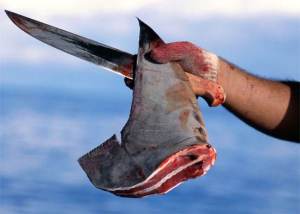Here’s a nice little review from the increasingly impressive Frontiers in Ecology and the Environment which seems to be showcasing a lot of good conservation research lately.
As we know, the world’s oceans are under huge threat, with predictions of 70 % loss of coral reefs by 2050, decline in kelp forests, loss of seagrasses, over-fishing, pollution and a rapidly warming and acidifying physical environment. Given all these stressors, it is absolutely imperative we spend a good deal of time thinking about the right way to impose restrictions on damage to marine areas – the simplest way to do this is via marine protected areas (MPA).
The science of MPA network design has matured over the last 10-20 years such that there is a decent body of literature now on what we need to do (now the policy makers just have to listen – some progress there too, but see also here). McLeod and colleagues in the latest issue of Frontiers in Ecology and the Environment have published a review outlining the best, at least for coral reefs, set of recommendations for MPA network design given available information (paper title: Designing marine protected area networks to address the impacts of climate change). Definitely one for the Potential list.
Here’s what they recommend:
Size
- bigger is always better
- minimum diameter of an MPA should be 10-20 km to ensure exchange of propagules among protected benthic populations
Shape
- simple shapes best (squares, rectangles)
- avoid convoluted shapes to minimise edge effects
Representation
- protect at least 20-30 % of each habitat
Replication
- protect at least 3 examples of each marine habitat
Spread
- select MPA in a variety of temperature regimes to avoid risk of all protected reefs succumbing to future climate changes
Critical Areas
- protect nursery areas, spawning aggregations, and areas of high species diversity
- protect areas demonstrating natural resilience or rapid recovery from previous disturbances
Connectivity
- measure connectivity between MPA to ensure replenishment
- space maximum distance of 15-20 km apart
- include whole ecological units
- buffer core areas
- protect adjacent areas such as outlying reefs, seagrass beds, mangroves
Ecosystem Function
- maintain key functional groups of species (e.g., herbivorous fishes)
Ecosystem Management
- embed MPA in broader management frameworks addressing other threats
- address and rectify sources of pollution
- monitor changes
Of course, this is just a quick-and-dirty list as presented here – I highly recommend reading the review for specifics.
![]() McLeod, E., Salm, R., Green, A., & Almany, J. (2009). Designing marine protected area networks to address the impacts of climate change Frontiers in Ecology and the Environment, 7 (7), 362-370 DOI: 10.1890/070211
McLeod, E., Salm, R., Green, A., & Almany, J. (2009). Designing marine protected area networks to address the impacts of climate change Frontiers in Ecology and the Environment, 7 (7), 362-370 DOI: 10.1890/070211













 Sharks worldwide are in trouble (well, so are many taxa, for that matter), with
Sharks worldwide are in trouble (well, so are many taxa, for that matter), with 

















